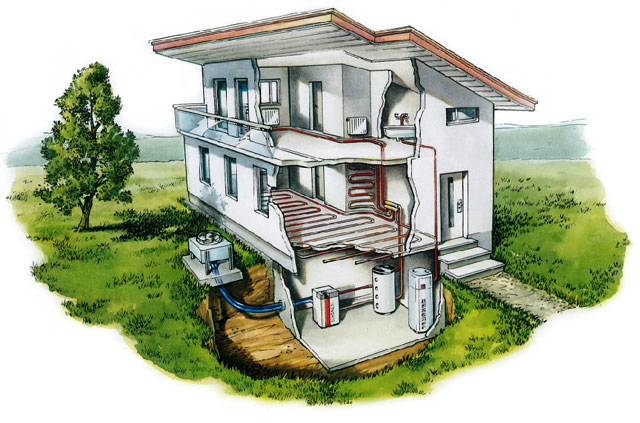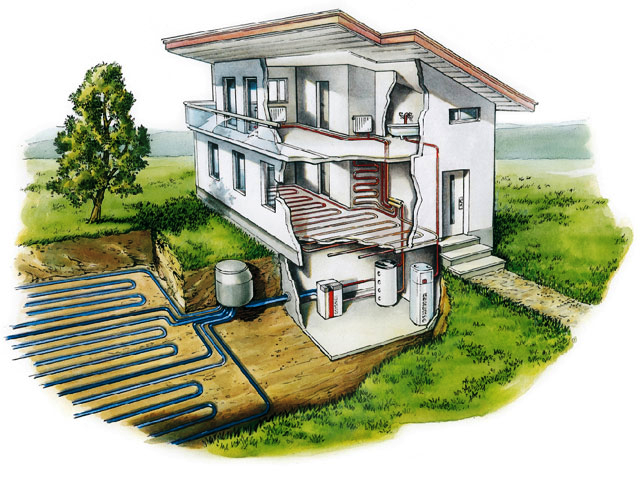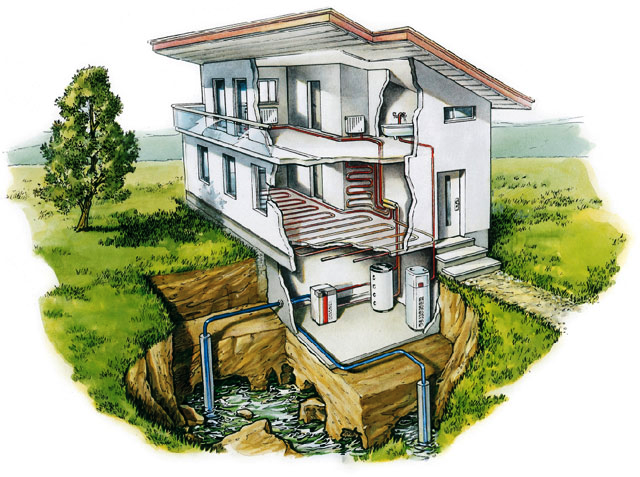Heat Pump types
Depending on the type of tanks that a heat pump uses to store and remove heat, there are the following categories:
Water-water heat pump
The external tank in these pumps could be the sea water, a lake, a river or even well water. A water circuit exchanges the heat between the pump and the external tank.
The internal tank is a network of terminal units of water. This type of heat pump is highly efficient but a sound geological study is required to ensure if there is sufficient water supply when the external tank is well water.
Air-water heat pump
This type of heat pump uses the outdoor air as an external tank while the indoor tank is a quantity of water.
Hot or cold water circulates through a network of pipes into terminal units full of water, thereby heating or cooling your living space.
These heating terminal units can be radiators, a skirting heating system or an under floor and wall heating system. Cooling terminal units are water fan coils.
Ground-water heat pump
The external tank of this type is not the outdoor air but the ground. The internal tank is also a network of water units. This pump is highly efficient because the ground temperature is more stable during winter and summer and on average closer to the desired indoor temperature.
Air-air heat pump
In this type of heat pump the outdoor air is the external tank and the internal tank is the indoor air of the building. The indoor air passes through the heat pump where it is cooled or heated (depending on the season) and then it circulates through a network of ducts into your living space. These heat pumps are suitable for commercial but not residential installations because the air heating quality is too low (dry air).





